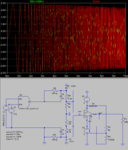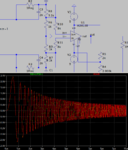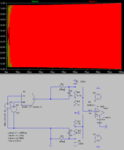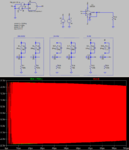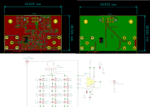Swend
Full Member level 4

- Joined
- May 14, 2019
- Messages
- 237
- Helped
- 10
- Reputation
- 20
- Reaction score
- 9
- Trophy points
- 18
- Location
- Roskilde, Denmark
- Activity points
- 2,304
Why not use fix 1M & 1k and trim them for best CMRR...
and adjust the gain or "differential mode input voltage range" simply with R4?
I tried adjusting the gain x2 and x3, but then the frequency response get's even worse. And for practical reasons the gain would have to be x10 and x100 so I would need a second op-amp as amplifier because AD8130 is optimized for unity gain and AD8129 is optimized for G=10.
And R4 is the reference voltage adjust.


